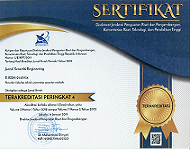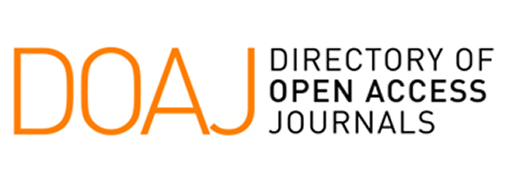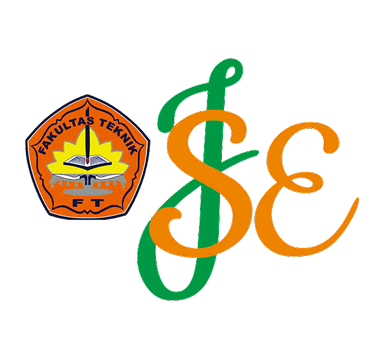Analisis Perhitungan Luas Lahan Jalan Berbasis UAV dan GPS (Studi Kasus : Proyek PLTA Kabupaten Karo)
Keywords:
Akurasi GPS, Fotogrametri UAV, Teknologi UAV, Sistem GPS, Pemetaan GeospasialAbstract
Hydroelectric power plants are power generation systems generally built in areas with abundant water availability and significant differences in elevation, such as upstream or near large dams. In Karo district, hydroelectric power plants are an important aspect, so their mapping must be ensured to be accurate. Inaccuracies in measuring land area can have significant consequences for land compensation costs, construction costs, and the overall operational efficiency of hydroelectric power plants (PLTA). Therefore, the use of advances in mapping technology has led to the emergence of various survey methodologies, each of which provides a significant level of accuracy and efficiency. One of them, the Global Positioning System (GPS), has been widely applied in terrestrial survey methods for land assessment because of its capacity to obtain very accurate coordinates. This study used comparative measurements with terrestrial survey and photogrammetry approaches. This comparison attempts to offer recommendations for the most efficient and appropriate measurement methods for the project. The results obtained can be concluded that the difference in area between the GPS and UAV methods is not much different and it can be concluded that the use of the UAV method can be used for calculating areas with minimal operational costs.
References
[1] B. Sudarsono, L. M. Sabri, and T. S. Dinoto, “Pengukuran Luas Metode Terestris Menggunakan Alat Ukur Gps Dan Metode Fotogrametri Menggunakan Foto Udara Uav Di Kolam Retensi Muktiharjo Kidul Semarang,” Elipsoida J. Geod. dan Geomatika, vol. 3, no. 02, pp. 143–150, 2020, doi: 10.14710/elipsoida.2020.9312.
[2] R. Rizkia, F. Murdapa, and R. Fadly, “Efektivitas Dan Perbandingan Pengukuran Bidang Tanah Menggunakan Metode RTK-NTRIP Dengan Metode RTK-Radio,” Univ. Lampung Jl. Prof. Dr. Soemantri Brojonegoro, vol. 2, no. 1, p. 35145, 2022.
[3] UNOOSA, “10 years of Achievement of the United Nations on Global Navigation Satellite Systems,” Unoosa, vol. 14, no. 7, pp. 246–247, 2011.
[4] M. R. Nugroho SJ, F. Murdapa, and E. Rahmadi, “Analisis Pengukuran Bidang Tanah Menggunakan Metode Rtk Ntrip Dengan Beberapa Provider 4G,” Univ. Lampung; Jl Prof. Dr. Sumantri Brojonegoro, vol. 2, no. 1, p. 35145, 2022.
[5] O. A. Apsandi, B. D. Yuwono, and L. M. Sabri, “Analisis Pengukuran Metode Rapid Static Dengan Single Base Dan Multi Base (Studi Kasus: Titik Geoid Geometri Di Kota Semarang),” J. Geod. Undip, vol. 7, no. 4, pp. 138–146, 2018.
[6] R. Irianto and F. D. Rassarandi, “Kajian Perbandingan Luas Hasil Pengukuran Bidang Tanah Menggunakan GPS RTK-Radio dan RTK-NTRIP,” JGISE J. Geospatial Inf. Sci. Eng., vol. 4, no. 1, p. 65, 2021, doi: 10.22146/jgise.63947.
[7] A. Y. Mabrur, S. S. Sai, and F. D. Agustina, “Pemetaan Orthophoto Untuk Rencana Pembuatan Peta Rawan Longsor,” J. Ilm. Univ. Batanghari Jambi, vol. 22, no. 1, p. 408, 2022
[8] Sulastri, Sulastri, and Rudi Latief. "Pemanfaatan Peta Foto Tegak Sebagai Peta Dasar Untuk Evaluasi Pelaksanaan Rencana Tata Ruang." Urban and Regional Studies Journal 7.1 (2024): 08-18. [9] M. E. Tjahjadi and M. Rifaan, “Foto Udara Menggunakan Unmanned Aerial Vehicle (UAV) Untuk Pemodelan 3D Jalan Raya,” J. Tek. Geod., pp. 1–6, 2019.
[10] F. L. Pamungkasari, Y. Prasetyo, and A. Sukmono, “Analisis Konfigurasi Optimum Kerangka GCP Untuk Survei Pemetaan Luasan Besar Menggunakan Unmanned Aerial Vehicle (UAV),” J. Geod. Undip, vol. 8, no. 1, pp. 268–277, 2019.
[11] Ahmad Ridho Sastra, Debi Nadia Putri, and Anggun Veranika, “Analisis Akurasi Ketelitian Vertikal DEM Foto Udara Pada Kawasan Permukiman (Studi Kasus: Kelurahan Sekip Jaya, Kecamatan Kemuning, Palembang),” J. Tekno Glob., vol. 12, no. 01, pp. 41–46, 2023, doi: 10.36982/jtg.v12i01.3176.
[12] Aliman, Rukmini. "Kajian Ruang Terbuka Hijau Pada Komplek Perumahan Menggunakan Pesawat Udara Tanpa Awak." Environmental Insight Journal 1.1 (2025): 38-48.
[13] A. Hadi Pranata, A. Jauhari, and A. Fithria, “Analisis Akurasi Luas Tutupan Lahan Menggunakan UAV (Unmanned Aerial Vehicle) Di Kawasan Hutan Dengan Tujuan Khusus (KHDTK) ULM di Mandiangin,” J. Sylva Sci., vol. 3, no. 5, p. 796, 2020, doi: 10.20527/jss.v3i5.2528.
[14] M. Rofiâtmuddin Pratama, S. Sai, A. Yuliananda Mabru, and Y. P. Manaha, “Kajian Ketelitian Titik Gcp (Ground Control Point) Menggunakan Aplikasi Online Post-Processing Ina-Cors Untuk Ortorhektifikasi Citra Satelit Resolusi Tinggi,” Pros. SEMSINA, vol. 4, no. 2, pp. 230–234, 2024, doi: 10.36040/semsina.v4i2.8080.
[15] I. Mutiara, A. Zakaria, M. T. Iqbal, M. Y. Hidayat, and B. Z. Amin, “Studi Perbandingan Penggunaan Total Station Dan Drone Survey Untuk Penentuan Koordinat Dan Luasan Area Pengukuran,” Semin. Nas. Penelit. Pengabdi. Kpd. Masy., vol. 7, no. 1, pp. 122–127, 2022.
Downloads
Published
Issue
Section
License
Copyright (c) 2025 Josua Riskinanta Ginting, Mohammad Abdul Basyid (Author)

This work is licensed under a Creative Commons Attribution 4.0 International License.












